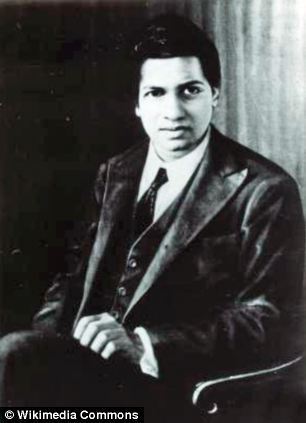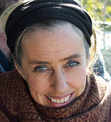Georgi Y. Johnson's Blog: I AM HERE - Opening the Windows of Life & Beauty, page 23
December 23, 2016
The Shamash – Hannukah & Essential Purpose
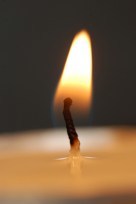 When the Jewish people light the Hannukiah, there is one candle, called “The Shamash” which is used each night to light the other candles.
When the Jewish people light the Hannukiah, there is one candle, called “The Shamash” which is used each night to light the other candles.
On the first night, stands two candles – one candle and the shamash. On the second night, there are three candles – two candles for two days or miracles, and the shamash. Thus the lighting of the candles continues until the eighth evening – when nine candles light up each Jewish home – celebrating the eight days of Hannukah and the “Shamash”.
“Shamash” in Hebrew, is the one that serves. This simple, often ignored candle is the light that lights up all the others. To me, the shamash is perhaps the most holy part of the whole Festival of Lights. The Shamash represents the light that we carry as conscious beings, manifesting as a service in unique structures of form on the planet.
Here is the case to be thankful for the Shamash, and Happy Hannukah and Thanksgiving to all of you!
1. Service, Passion and the Meaning of Life
The Shamash is of service.
That means, that all the miracle represented by the eight candles is dependent on her. Without the Shamash bringing the light from a source way beyond the very concept of salvation and miracle, there would be no miracle.
In our culture, we have a latent attitude that she or he that serves is inferior. Happiness is hooked into a condition of being served and not being of service. This is a terrible belief.
Can there be such a thing as private happiness? Happiness is directly connected to our capacity to be of service to the whole. If we are not of service, if we have no use beyond our own individual agenda, then we have no satisfaction. The temporary safety of having others serve us cannot be trusted – as we are dependent – dependent on a temporary structure of power.
In ourselves, the one who is served but is of no service has no sense of purpose. In no time, she who does not serve begins to waste in isolation – an isolation born from the ignorance of being a divided self with no interest in the whole.
Service arises from passion which is unconditional to personal pleasure or pain. As such, service allows the greatest manifestation. In the case of the Shamash, this is in the lighting up of the Hannukiah in every Jewish home.
2. The Shamash and Thanksgiving
The spirit and energy of gratitude is closely connected to passion and service.
Even when our whole world seems to collapse, it is still possible to find an attitude of gratitude. Gratitude for the service of others is a key. This opens the gratitude that we are able to serve, that we are part of the whole. It is this energy of gratitude which is able to light our way out through the rift between our personality and the core inner light. It lights our way because it releases the contraction or energetic seizure around private, ultimate identity as a structure of ego.
Remember the Shamash! It is not Shabbat Goy doing the dirty work for the miracle – it brings light from the whole which is of service to each individual miracle. Experience gratitude for its tender, constant flame!
3. Existence
Existence as human beings, also as Jewish humans or American humans, involves perception.
Before we do, say or decide anything; before we take any form, there is the one perceiving. In the act of being anything or existing, we perceive. Perception is before, behind and through all manifestation.
Perception is light and perception brings light.
The Shamash is that which beings light to each other candle. It is that which shares the light, or inspiration, from one candle to another.
As such – every one who is truly existing in the here and now is a shamash and is of service to the miracle of creation. Just this existence – this flame in its purity, is a service to the whole. Just this one flame can light up many, many other candles, and even by itself, can illuminate an infinite night.
December 22, 2016
SEASON OF JOY. Meditation to Open the Inner Light
1. Connect with the physical body, the skeleton and the bones, and bless/affirm/sanctify the reality of physical form
2. Connect with the sentient body (feeling/awareness), and bless/affirm/sanctify the any arising feelings/emotions/sentience/experience/
3. Connect with the mental body (the mind/thoughts/silence) and bless/affirm sanctify any thought processes arising.
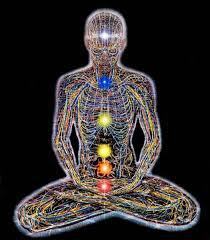 B.
B.Symbolically “light up” the 7 chakras.
1. Begin with the heart chakra
2. Return to a choice center point (of perception or the earth)
3. Light the Thyroid chakra
4. Return to center
5. Light the Solarplexus chakra
6. Return to center
7. Light the Pineal chakra
8. Return to center
9. Light the Hara (Sacral) chakra
10. Return to Center
11.Light the Crown Chakra
12.Return to Center
13. Light the root chakra.
-Music-
http://perception.inner-growth.org/wp-content/uploads/2016/12/Carlos-Nakai-Earth-Spirit.mp3
December 11, 2016
7 ways to liberate love through liberating the mind
It is important to honour the depth of unconscious fear around the word “Love”, still more when we talk and aspire to a love which is unconditional. No fear can survive in the here and now – fear is always generated by thoughts based on what was, and what could be. In the ‘Now’, fear is just the momentary imprint of an excitement in the nervous system. So it is worthwhile to check into this fear – around unconditional love – through the present moment, and to mentally release some of the beliefs on which this fear is based.
7 beliefs about love through which we imprison ourselves.
1. Love exists separately from the rest of creation.
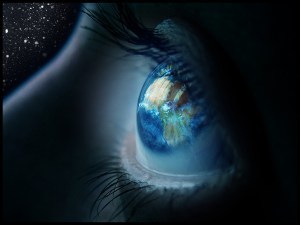
Is consciousness absolute or is it an effect of love?
Where love is believed as a way to escape, transcend or evade the world of body, mind and gut, a misconception is underway which will open a process of suffering.
While love is beneficial, expansive, healing and opening, the very idea that it is somehow “other” than the kitchen sink, the grit in our finger nails, the neighbors mother, or the big cruel world is a misconception.
Embedded in this misconception is the subtle mental agenda to divide the self from the feared “outside”. This unconscious investment in a belief in the feared “outside” causes an energetic contraction or freezing which feeds back into the form as a “reality”.
In no time, “Love” is something that needs to be defended, protected against perceived enemies. In no time, love isn’t that loving anymore.
2. Love is something that we do.
The question of choice in love is an open one. Is there a subtle layer of choice in which we agree to let go of our patterns, identifications, fears and refusals to endure the vulnerability of pain?
Yet even here, we don’t “do” love. What is actually happening is that we allow this imperceivable mystery called love.
“We” – all the ideas and beliefs of who and what we think we are and where we think we are going – gets out the way. These networks of identification and agenda surrender to something wondrous beyond themselves.
It is not a doing, but a “letting”. Do we “do” the allowance? Perhaps. But the allowance is unconditional – if what emerges from the surrender is something that feels like love, then it’s good. But it’s not in our control. Also pain and grief is made of love.
We don’t get to decide the form.
3. Love can be owned and controlled.
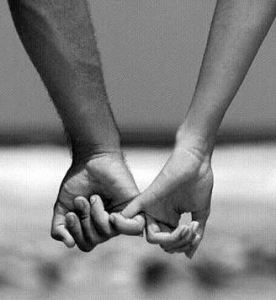
“Love is a law that operates in such a way, that you and I cannot dictate to it, we can only blend with it.” Bob Moore
Even if in our language we are gunning for universal love, in our minds and in the configurations of our energy, we are still formed to some degree in the pattern that there is an inherent difference between “my” love and “your” love.
Seeing our individual personhood as the origin of love, we inevitably feel it as limited in supply, and that it is given at a certain cost. We believe that this love can be “won” and “lost. We get possessed by the idea of it.
We can feel outraged if our (personal) love is not seen, respected or recognized by the “other” person. We expect a bit of their personal love in return. Otherwise it is abuse. The love is contracting into hatred, sacrifice, and resentment.
In this, there is a confusion between the tender, vulnerability of the form in opening to love, and the love itself which can never be controlled, directed, possessed or identified.
We tend to fall short of the mystery and spiral into a quest for particular feelings that can look like a spiritual copy of any drug addiction.
4. Love depends on certain conditions.
Funnily enough – unconditional love is… unconditional.
It doesn’t depend on any conditions of form, mind, heart or body. It does not require us to meet a certain standard of perfection in order to be everywhere and in everything. It is equally present in the heart of the greatest sage as it is in the hairs clogging the kitchen sink. It doesn’t differentiate. It can’t, because it does not depend on time and space.
This means that we can experience the same effects of love today as we did for someone 40 years ago. It is not caught in time. Nor is it caught in space. In a large part, it is unconscious, needing nothing of reflection.
If the object of our love dies, does the love vanish with it?
5. Love can be more or less.

The idea that love originates in the individual body and is determined by it’s contours is a major limitation. The body is nothing other than an unconditional manifestation of love. Always.
We can measure the effects of love. But we can never measure love itself.
This is because love is not limited by our mental, emotional and psychological forms. We can decide that “somebody” is bringing a tremendous love, and “somebody else” is not bringing any love at all. But this verdict is based on the projections of mind arising out of a fundamental misconception. Love is not exclusively in, or even exclusively moving through the objects of our physical senses. It is not confined or originating in the separate physical body.
The objects of our physical senses, including our own bodies, are in fact moving through love. The closest analogy would be to take love as the air on the planet. The space between stuff. The space within stuff. The space behind stuff and the space after stuff.
All this stuff is here by grace of this loving space, and is inseparable from it. All transformation and healing is allowed by virtue of this loving space. This infinite space does not require any stuff to exist. But all the stuff is dependent on it.
Can infinity be more or less?
6. Love is the feeling of love.
When someone punches you on the nose, your nose burns with pain. The pain is an effect of the punch. In the same way, when the living space which is love appears through the breaking open of our hearts, there is a feeling of the heart breaking open. Perhaps a feeling of the mind losing its normal functioning, perhaps even a feeling of the body getting a life of its own (phew!). These are the imprints of love. They are not love in its purity.
These feelings are the effects of love. They are not the love itself. They are the sentient impressions of love on the forms which we are carrying, which are breaking down, healing, transforming and evolving.
The confusion of the effect with the cause (and labelling this panorama of changing effects “love”) leads again into suffering.
In no time, we are choosing to identify the “positive” or pleasant effects us love, and the other (painful) effects as not-love. How many of us would affirm the power of love in a process of grief or loss? How many would have the courage to allow the love in the agony of rejection or abandonment? But how could these feelings be anything other than the effects of love? The effects we don’t ‘want’?
And love becomes conditional again, on the pleasure and not the pain. And in running from suffering, we suffer more. Still worse, we become cruel to ourselves and others.

From antiquity to the modern day – destruction based on misconceptions of love.
7. Love is the opposite of hate
From this belief all the way to the crusades and the Spanish Inquisition.
Love exists beyond duality. It is not separate from any molecule, particle, or “moment” of memory. Love never excludes, it never divides.
It is so much at source of who we are that it is when it is at its most powerful and free that we are often least aware of it – such as in infancy or in those time pure action through truth – too fast for sentient reflection.
Hatred is also composed of love. Without the omnipotency of love, hatred would have no context. In the world of energetic form, the opposite of hatred is not love, but sacrifice. We experience hatred towards ourselves and others when something needs to be destroyed or be allowed to die. Something needs to be sacrifice. Unevolved enough to e able to sacrifice an aspect of our inner world – an illusory sentient belief structure of identification and attachment, we seek to sacrifice it in the apparent “other” – as if this sacrifice could bring relief to the demon we face within.
These crucifixion scenarios, or the hunt for the infidel (or the witch-hunt), these displays of hatred are the actions of despair – the multi-layered attempts to realize the deeper truth of who we are through destruction – the direct destruction or burning down of false identity.
The love is here, before, during, within and after every rampage of hatred. It can not be erased, it can only be hidden in the smoke of human delusion.
December 4, 2016
The Science & Spirituality of Srinivasa Ramanujan
What is the source of scientific inspiration? Are we the mental recipients of a reality out there, which is communicated to us through the unfolding of consciousness, whether in the form of deep intuition or divine inspiration? Does discovery arise out of knowledge, or does the unknown define the nature of discovery? Is the brain a receiver, or a channel of truths arising out of a dimension beyond the physical? How does the individual brain interpret and represent new information from beyond the frontiers of the known?
On 16 January 1913, Srinivasa Ramanujan, an unknown Indian petty clerk from Madras, sent nine pages of mathematics to the esteemed mathematician of Trinity College, Cambridge, Prof. G.H. Hardy. Previous attempts to share his work with British academics had failed. M. J. M. Hill of University College London had seen some talent, but commented that Ramanujan’s papers were riddled with holes. H. F. Baker and E. W. Hobson, returned Ramanujan’s papers without comment. Even the esteemed mathematician G.H. Hardy of Cambridge first suspected that these nine pages of notation could be a fraud.
Yet, perusing the document, Hardy became intrigued. He recognised some of the Indian’s formulae, but others “seemed scarcely possible to believe”. Some of the formulas were already known, but after seeing Ramanujan’s theorems on continued fractions on the last page of the manuscripts, Hardy commented that he “had never seen anything in the least like them before”. He conjectured that Ramanujan’s theorems “must be true, because, if they were not true, no one would have the imagination to invent them”.What ensued was the discovery of one of the greatest mathematicians, and some of the highest impact pure mathematics of the last century. The collaboration that followed between Hardy, Littlewood and Ramanujan would continue until Ramanujan’s premature death at age 32.
Srinivasa Ramanujan
While the beauty of the story has long impacted all students of mathematics, the nature of Ramanujan’s mathematical genius, and how he himself perceived it, tends to be less explored. Hardy called it some kind of deep ‘intuition’, but Ramanujan openly stated that he received the mathematical inspiration and sometimes whole formulas, through contacting the Hindu Goddess Namagiri while dreaming. Ramanujan was an observant Hindu, adept at dream interpretation and astrology. Growing up, he learned to worship Namagiri, the Hindu Goddess of creativity. He often understood mathematics and spirituality as one. He felt, for example, that zero represented Absolute Reality, and that infinity represented the many manifestations of that Reality.
“An equation for me has no meaning unless it expresses a thought of God.”
Ramanujan grew up as a traditional Brahmin with his forehead shaved and wearing a topknot. He quoted the Vedas, interpreted dreams and was regarded by his friends to be a mystic. Throughout his life, Ramanujan worshiped at the Sarangapani Vishnu temple in Kumbakonam. On the day that he received the letter of invitation to Cambridge from Hardy, his compliance was not immediate. Leaving India would mean the loss of his Brahmin status. He would first have to seek the blessing of the Goddess Namagiri. Meeting non-compliance, the professors in Cambridge were perturbed and frustrated.
Three months later, the Goddess appeared. Some stories say it was in the dream of Ramanujan’s mother. Others say that Ramanujan himself had the dream. But either way, the young Indian agreed to set sail to England, with suitcase full of notebooks of mathematical formulas he had been compiling since age 14, through years of expulsion from college, marriage to his 9-year old bride, poverty, illness and his work as a clerk
Arriving in 1914 on the eve of World War I, Ramanujan experienced severe culture shock in England. As a vegetarian, he had to cook for himself and he insisted on going bare foot when he could. Hardy and Littlewood both acted as his mentors, but increasingly they became his translators: from the world of mystical India to the world of proofs, presentation and academic diplomacy. For them, Ramanujan was in himself a lifetime mathematical discovery.
Ramanujan claimed to dream of blood drops, after which, he would receive visions of scrolls of complex mathematical content unfolding before his eyes. “While asleep, I had an unusual experience. There was a red screen formed by flowing blood, as it were. I was observing it. Suddenly a hand began to write on the screen. I became all attention. That hand wrote a number of elliptic integrals. They stuck to my mind. As soon as I woke up, I committed them to writing.”
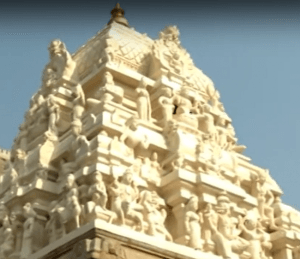 Ramanujan was the first Indian professor to become a Fellow at Cambridge University. Hardy said: “He combined a power of generalization, a feeling for form, and a capacity for rapid modification of his hypotheses, that were often really startling, and made him, in his own peculiar field, without a rival in his day. The limitations of his knowledge were as startling as its profundity. Here was a man who could work out modular equations and theorems… to orders unheard of, whose mastery of continued fractions was… beyond that of any mathematician in the world, who had found for himself the functional equation of the zeta function and the dominant terms of many of the most famous problems in the analytic theory of numbers; and yet he had never heard of a doubly periodic function or of Cauchy’s theorem, and had indeed but the vaguest idea of what a function of a complex variable was…”
Ramanujan was the first Indian professor to become a Fellow at Cambridge University. Hardy said: “He combined a power of generalization, a feeling for form, and a capacity for rapid modification of his hypotheses, that were often really startling, and made him, in his own peculiar field, without a rival in his day. The limitations of his knowledge were as startling as its profundity. Here was a man who could work out modular equations and theorems… to orders unheard of, whose mastery of continued fractions was… beyond that of any mathematician in the world, who had found for himself the functional equation of the zeta function and the dominant terms of many of the most famous problems in the analytic theory of numbers; and yet he had never heard of a doubly periodic function or of Cauchy’s theorem, and had indeed but the vaguest idea of what a function of a complex variable was…”
As for his place in the world of Mathematics, Paul Erdős of Israel’s Technion passed on Hardy’s personal ratings of mathematicians. Suppose that we rate mathematicians on the basis of pure talent on a scale from 0 to 100, Hardy gave himself a score of 25, J.E. Littlewood 30, David Hilbert 80 and Ramanujan 100.
When he returned to India, Ramanujan was again gravely ill. From his death bed, he continued to write notes from revelations in dreams, which he believed were gifts from the Hindu goddess. In a last letter to Hardy, Ramanujan shared his latest insights. The letter described several new functions that behaved differently from known theta functions, or modular forms, and yet closely mimicked them. Ramanujan conjectured that his ‘mock’ modular forms corresponded to the ordinary modular forms earlier identified by Carl Jacobi, and that both would wind up with similar outputs for roots of 1.
No one at the time understood what Ramanujan was talking about. “It wasn’t until 2002, through the work of Sander Zwegers, that we had a description of the functions that Ramanujan was writing about in 1920,” said Emory mathematician Ken Ono.
Building on that description, Ono and his colleagues went a step further. They drew on modern mathematical tools that had not been developed before Ramanujan’s death to prove that a mock modular form could be computed just as Ramanujan predicted. They found that while the outputs of a mock modular form shoot off into enormous numbers, the corresponding ordinary modular form expands at close to the same rate. So when you add up the two outputs or, in some cases, subtract them from one another, the result is a relatively small number, such as four, in the simplest case.
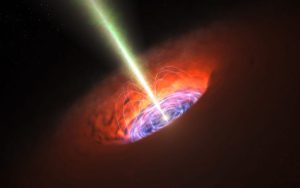 “We proved that Ramanujan was right,” Ono says. “We found the formula explaining one of the visions that he believed came from his goddess… No one was talking about black holes back in the 1920s when Ramanujan first came up with mock modular forms, and yet, his work may unlock secrets about them.”
“We proved that Ramanujan was right,” Ono says. “We found the formula explaining one of the visions that he believed came from his goddess… No one was talking about black holes back in the 1920s when Ramanujan first came up with mock modular forms, and yet, his work may unlock secrets about them.”
“It’s fascinating to me to explore his writings and imagine how his brain may have worked. It’s like being a mathematical anthropologist,” said Ono.
Can Ramanujan’s mathematical magic be reduced, as world academia has claimed, to a ‘deep intuition’? What is intuition anyway? Could it be that the brain is an organ of consciousness and that when it’s trained to surrender, or to open in scientific “prayer”, it’s able to reflect intelligence from sources way beyond itself? Where do scientists go when they look for a flash of inspiration? To the past? To the known? Or to the great unknown, over the edges of the borders of their own conceptual frameworks?
Today, the legendary story of Ramanujan is being told through the big screen in the new film: The Man Who Knew Infinity. Facebook founder Mark Zuckerberg recently named Ramanujan as one of his favourite scientists. He points out that all that genius – an intelligence that transformed mathematics and physics – could have been lost, had Hardy not responded in those early pre-war years. What would have happened if Ramanujan had access to the internet? He asks. How many more Ramanujans are out there?
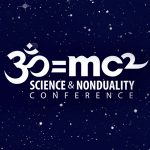
This article first appeared on Science and Nonduality (SAND)
The Refugee Within ~ Healing the Trauma Inside-out
“I don’t want to be here.”
“I don’t belong here.”
“Nobody cares about me.”
“I have to do it alone.”
“Someone wants to kill me.”
“God, get me out of here.”
This is not the voice of the newly arrived refugee, it is the undercurrent of our own minds – those repeating sentences at the back of the mind that give back-stage voice to an existential omnipresence of insecurity. Disconnected from each other, sometimes strangers in a social game, suspicious of the planet and despairing of the death that awaits us, no-one is exempt from the living, felt sense of the refugee within – no matter how high we build our walls.
Forsaken, abandoned, unnoticed, undefended, betrayed, alone. The shuddering horror of an unfathomable despair lurks in our midst – an existential angst – armoured only with the willpower that temporarily plates the vulnerability with the impression of being an invincible part of the consensual ‘whole’, of having an unquestionable place in society, a rock-solid status, and above all, an exemption from the bankruptcy of that hell-zone of potential trauma.
Yet wherever we go, it follows us, this fear of that which must never become manifest in our lives. From our parents home, to the open field, from the office to the marital bed, from the cathedrals of consumerism we call shopping malls to that thud in the middle night that wakes us up in naked shock at being alive.
For a while we manage this inner void that can be experienced as a devouring threat to the very substance of all we are.
We take that sense of condemnation and inherent unworthiness – that frozen guilt – and we throw it at “the world” in the form of accusation. The world is bad, Trump is evil. It’s because of Brexit. It’s the refugees. They are destroying ‘our world’.
We take our anxiety and we blame the coldness of the country, the abuse of institutions, the violence of government.
We take our anger and we root it in the ‘other’ – it’s because of the other sex, because of our parents, because of the neighbor. Because, because, because – we constantly give authority to the projected enemy as the cause of our experience and in this, we woefully dis-empower ourselves.
We take our shame at our inability to live life in purity and we experience disgust: disgust at the world, disgust at the working classes, disgust at terrorism, disgust at the pimps and whores, disgust at the refugees.
And the more we refuse to suffer the affliction running through our bodies, hearts and minds, the more we become displaced, dispossessed and disinherited of the living vitality that is our birthright as authentic expressions of life itself. We give it away to the other, and mask a form of conformity, hopelessly trying to avoid the smoke of the traumatic split within – the split in which we conceived of ourselves as separate, alone, in a duality of self V world.
In time, we lose connection the flow of our own inner feelings; our thoughts become internally censored, and our body becomes awkward in its expression – subject to impotent attempts at mind-control. We become refugees from ourselves, in the deepest sense of the word.

Enter: the Refugee
At this moment, 20 million men, women and children are officially registered as refugees by the UNHCR. These are not migrants seeking a tastier quality of life, but refugee families who have been thrown without choice from their homes, under threat of death. It’s a number which is on the rise, and the tsunami of humans flooding the borders of privilege is not going to retreat any time soon.
This is a historic moment of confrontation with trauma, and a spiritual opportunity to open to the refugee inside ourselves. Because if we don’t allow that inner trauma of not belonging, that sense of abandonment, poverty consciousness, grief, loss, anger and fear, then we will perpetuate it on the outside – spreading it even to our children.
Let this be clear: no amount of regulation of the outer refugee will heal the refugee within our own minds, hearts and bodies. This is a field of experience which is alive in the somatic layer of every one of us.
Trauma has a resonance, such that when we inhale the smoke of trauma, the shields around our own inner void are activated. All those rejected bits of experience – not just from our own lives, but also those genetically encoded in us through our ancestors – begin to vibrate, awakening through sheer attraction. This is mentioned by Eckhart Tolle when he talks about the infectious nature of the pain body; and it is easily recognizable in our own lives.
When someone comes towards us with a lot of anger, outrage and pain, there is a high chance it awakens within us the same experiential memory which we identify with our own lives. We do this, to try to contain the energy of pain that awakens within us.

Two young Iraqi boys, their family displaced by the fighting in Mosul, peek out through the zipper of their tent at Hasansham camp, as UNHCR delivers cold weather supplies, including warm blankets and stoves.
© UNHCR/Photographer
Impermanence
Those who have allowed the identity of separate person-hood to fall into that ‘black hole’ of bottomless surrender (so easily identified with trauma), have risen again with the wisdom of impermanence. This is the embodied, resonating message of every refugee. Our identity, status, physical home, belongings, community, nationality and religious or cultural context can be lost, by outer events, from one year to the next. All will come to pass – just as all is in flux, moment by moment. The very foundations of our world can be easily blown out, leaving us still alive, still here as a perceiving entity, clutching perhaps at the remnants of self, but robbed of connection either to the place or the community around.
Most of us are second generation children of two world wars, which were separated by a period of intense poverty and global depression. The experience or threat of dispossession and/or death, loss of position, status and access to basic needs is encoded as traumatic memory at the somatic layers of our psychology. Some of us are programmed to avoid it all costs, while others are set up with a resilience that intuitively knows exactly what’s needed when it all goes wild. Yet regardless of our choices, whether they be exclusive or inclusive, this trauma is surfacing now among us – in a very literal sense.
Deracination
Deracination is the experience of being uprooted, disconnected from the planet, nature and the earth, and as a consequence, disconnected from each other. Through gaining a right to exist through the socio-cultural configurations of belonging/not belonging, or superior/inferior, or even through the belief that wealth determines the value of the person, we become divided from the deeper existential security that comes with true connection with the earth as human beings.
This connection doesn’t need borders of nations to feel safe. It doesn’t require social affirmation to feel acceptable. It doesn’t need permission to be free. It is this fundamental connection to the planet that drives the feet of the refugees across the globe – trusting this fundamental human companionship in the inheritance of the earth. Unfortunately, the response they meet is dramatically polarized between those that feel that unquestionable right to exist, and those that still believe it is something to be dictated from some man-made authority.
Equality
Yasmin was a refugee from Persia as a teenager, but has been a fully integrated Dutch citizen for several decades. She is married to a Dutch man and has two children. With the recent refugee crisis, she was eager to offer her skills as a therapist and manager to be of service to those who are now in newly arriving in the midst of that horror. One afternoon, in conversation with her Dutch co-workers, she was existentially shocked when one of her colleagues told her with a voice of reassurance: “Well, I see you as an equal.”
Equality, like democracy is a word that is easily bartered, abused and sold but very rarely felt. Yet there are enough of us that have practiced for years the simple and unthreatening movement of imagining ourselves in the shoes of ‘the other’. This is the opening of the window of compassion, which is the most healing movement possible when confronted with the trauma – with its constellations of anger, fear, despair, guilt and shame. It is effective as just the willingness to imagine the perspective of the other, breaks open the lock-down of the separate self, connecting us to the whole and the whole to us, and dismantling the insane illusion of separation under which we collectively suffer.
This is the psycho-spiritual, human challenge of these times. It’s not a political request to open the borders, nor does it say that slamming them shut is going to solve anything in the long-term. Rather, it’s an invitation to stay open to the experience of the ‘other’ regardless of our individual or collective decisions. In this, we protect our humanity, which in these times is most under threat. In this, we welcome home the inner refugee, to hear her stories and to hold her close as a child of the universe. In this we heal ourselves, which is a direct way to be of service to the whole.
November 28, 2016
Blessings of the Ancestors – the Epigenetics of Resilience
“They fuck us up, our Mum and Dad,
they don’t mean to, but they do.”
~ Philip Larkin
Research showing epigenetic evidence of the transition of trauma through generations, from parent to child, is getting a lot of attention. It can seem a hopeless case. Looking back to our ancestors, we can trace unlimited amounts of traumas around gender inequality, slavery, world war, poverty, abuse and endless cycles of loss. It can seem impossible to find where to begin healing. Yet, still, we feel afflicted. We’re unhappy, but as the roots of our suffering are deeply rooted in the unconscious, we don’t ‘know’ where to begin with liberation. Is it a pandora’s box? Should we, as the British saying goes, let sleeping dogs lie?
The beauty of the science of epigenetics, according to Dr. Bruce Lipton, is precisely the opposite. This knowledge – which amazingly gives scientific affirmation to the ancient wisdom of many mystical traditions, has the potential to remove that sense of victimhood in which we are genetically and environmentally disempowered and without h0pe. The science of epigenetics reveals that we have the power to lift the family curse and to free ourselves, our ancestors and our successors from needless suffering. It even shows that in every trauma healed, an incredible resource of resilience is born.
Traumatic Tunnelling
Trauma moves in cycles. From the original banishment from the consensual whole, it spirals into its own universe of despair and existential angst, before moving back into the whole through some form of manifestation. Each cycle heals a little bit of it. It can require a lot of time and the ability to take it in little pieces – a method Peter Levine has called titration. It will also always require at some stage a transpersonal element – talking to a friend, therapist or any other human. This is because trauma is born in the junction between one human being and the whole.
The full healing of trauma is only found when the cycling itself is released and there is a sense of great peace. Often, this is prevented by our reluctance in allowing the most taboo aspects of the traumatic event – the energy of the abuser, the shame of the murderer, the insentience or cold heartedness of the ‘bad guy’. Our healing agenda means we try and keep these taboo energy charges out of our system and to rescue only the ‘good’ bits. Yet, in this way, we continue to be traumatized and to hold onto the energetic contraction. We still move with the logic of exclusion, which is the logic of trauma.
Because trauma works through cycles, there is a high chance that a traumatic event experienced directly in one individual’s lifetime, can be found repeating back through his or her ancestry. It can be quite specific – for example a theme around drowning, a theme around poverty consciousness, or a theme around military service. The beauty of acknowledging inherited trauma here is that we also get the possibility to open up inherited resources associated with the theme. It can sometimes look like a collaboration of evolutionary mastery moving through the family lines.
When we successfully resolve a trauma and it comes to peace, we don’t loose the resources around the traumatic experience. We still remember that we could drown in an ocean, or we still intuitively know how to survive if we haven’t got a dime. What get’s lost is the contraction – the immobilizing and confusing stress responses that offer the limited options of fight, flight or freeze.
Sentient Sourcing
Healing any energetic contraction involves moving out of the polarity of the spiral – whether it a belief system or feeling affliction – and without denial, allowing a third non-dual position to also co-exist in and around the contraction. Often this non-dual position will come forward by itself, simply through sentient sourcing. The process is beautiful. It involves moving awareness to the heart area and feeling the presence of either your mother or father behind your back. Behind their back, you imagine their mother or father (or both) and perhaps on. By connecting with them, through feeling or imagining the feeling of their presence watching you, certain feeling atmospheres come forward, as well as certain grievances, attitudes or beliefs. Through allowing the contemplation, insight and inner wisdom begins to emerge.
Traumas moves in chains, and often one will invite the next. A contraction around abandonment is often linked to a contraction around death or loss, for example. The art is to take it piece by piece, with love, some playfulness and while maintaining a lightness of heart.
Through it all, we will see a spiralling of sentient dualities between ‘self’ and ‘other’, or ‘individual’ and ‘the world’. For example, a theme around sexual abuse could manifest as a contraction of shame (self) V disgust (other/world). The healing energy for this contraction from the subtle nondual dimensions is the energy of purity – purity that is inherent, that never needs to be earned and which can never be taken away.
The cycle of healing in this instance will involve experiencing both the shame and disgust as energetic manifestations, unidentified from the story, alive in the survivor. In this, the boundary of self V other breaks down in acceptance of the living energy contracted through two poles within the inner system. In feeling through the contraction, an emphasis is placed on purity. Purity regardless of shame; purity regardless of disgust. Purity is also located at some level in the antagonist in any story.
If the traumatic contraction began generations before, then it is possible to work directly with the ancestors. For example, to feel through the energy playing out in a case of incest – the shame in the disgust and the disgust in the shame of all players, as well as the purity behind the helplessness of all players within the suffering whole. The key comes in sourcing identical atmospheres in ourselves and our ancestors, and in realizing that our ancestors didn’t curse us, but actually are screaming purity, wishing purity for us. The whole traumatic universe of this particular contraction is about the liberation of purity through physical form. Also our ancestors, we find on inquiry, are determined to redeem that inherent purity that has been so obscured through the family evolution. They are on our side.
The same principles apply through other, connected nondual fields, such as Guilt V Accusation returning to inherent innocence; or Hatred V Self destruction returning to love.
Being the Evolution
Our ancestors are not our curse nor our burden, but our blessing. They walk behind our backs in a great, expanding pyramid of endorsement. They wish us love, freedom, peace, purity, innocence. They are for us with all the resources of their hard-lived lives, and they are within us as genetic imprints, as lessons and resources every step of the way.
When we are able to acknowledge that we are intimately an expression of this golden chain of evolution, then we are able to open to a deep responsibility – to let these packages of frightened energy unfold and come to peace through us. The process heals and also enlightens. Subtle inner states that we could have believed to be part of ‘reality’ emerge and dissolve within the light of our own consciousness, releasing subtle shields of negativity and defensiveness against ‘the world’. The process – moving through beliefs, feelings and emotions, and bodily pains and afflictions – is always worthwhile, every micro-detail of it.
At a certain stage, trauma becomes mastery, enforced by incredible wisdom. Here, we find the ones who move into the world in service to the whole, with insight and depth that moves beyond the superficiality of discrimination. We see these beautiful souls active n their areas of mastery – born of family trauma – whether it is working with the dying, rehab centers, rape crisis centers or bringing relief to the hungry.
Fearless in the dread-fields, they have learned how to navigate the dark precincts of the collective unconscious, and how to release the contractions of separation that seem to have banished them from the whole.
November 22, 2016
Blessings from the Home we Never Left
Arriving at work the morning after the presidential elections, I stepped out of the car and took a last glance at the horizon before entering the building. I was suddenly shocked by the pure presence and serenity of the distant mountains of the Galilee on the horizon, seeing the view, as if for the first time. A living calmness, a sweetness too pure for human taste, a profoundly reassuring, benevolent indifference to the great human drama pierced through the cloud of depression and negativity that was hovering heavily around the heart.
So it is, So it isn’t.
So it is right now: turn the glance away from the great miasma of the human state, and the soul is instantly nurtured by a greater whole – a wholeness from which we collectively banish ourselves, and each other, in the name of some strange strategy of survival from illusory threats. It’s in the soft touch of the wind, in the trees and animals, in the gentle kiss of the earth on the feet.
The nature of awakening is that when we open our eyes to the miracle of our existence – and to the miracle of each other – old traumatic states can get activated. These are the demons of the emptiness – those forbidden parts of ourselves that cannot be left out. It’s in the agony of violation, the hunger to possess, the inevitability of death, the shame of the body, the belief we should be pain-free here, and in the incredible disappointment in the ‘other’.
As we awaken, we could experience an outbreak of the horrors in our perception that have been repressed. This ugliness can be compelling, and we can find ourselves circling the emerging (and somehow familiar) traumatic thoughts and feelings with a degree of obsession. We can spend so long gazing into the pits of hell, that the pits of hell begin to gaze back into us – filling the length and breadth of our horizon. Thought, feeling and emotion becomes trapped in a limited state of suffering.
Perceptive Freedom
It doesn’t have to be like this. We just need to have the courage to pull our glance away and to show ourselves that we’re also able to look elsewhere: at the miracle of a flower, at the old lady that smiles in the street, at the infinite blue skies above, into the miracle of the ‘other’.
Each symptom of disease is actually a sign of healing, and an opportunity for growth. The problem is that rather than finding heart to welcome these healing symptoms, we’re wired to get rid discomfort as soon as possible – repressing the disease back undercover. All the resources of the universe are available to us when we are ready to heal – which is our shared, inevitable purpose.
The Chalice
The golden chalice is precisely in the ‘here and now’: in whatever is surfacing according to need. To drink from the chalice is to drink from the river of life. The willingness to meet the challenges of awakening with a return to awakening is the elixir of sacred responsibility that will transform our experience and our world.
We might feel isolated, but we are never alone. We might feel condemned, yet our eternal innocence is inviolable. We might need help and help is here – all we need to do is open the grip on personal survival and reach out to the whole. In this way, we will walk each other home to the space of sacred freedom that could never be lost.
Nature is everywhere, unconditional and abundant in its healing power. We are part of nature. Even in the space between the table and the wall, a resonance of light is emanating pure presence and a genius that we can hardly fathom. Each night we surrender into the arms of the greatest healer of all – sleep – where beyond all our efforts at control and being on the “right side” the bottomless home of the unconscious seeks to set us free.
For every cruel word spoken, there is the great peace of silence between the sounds. For every illusion, there is the ever-present, untortured resource of unconfined light. We don’t need to wait. We don’t need to be ‘good enough’. We don’t need permission. All we need is to allow that whatever else seems to be going on in perception, we are the sole source of all we experience and as such we are unconditionally free, alive and part of the whole.
Don’t wait for kind words before giving them. Don’t wait for the smile before smiling. Don’t long for intimacy without taking the risk of opening the windows of the soul to others. Because the more we awaken from the illusion of humanity’s self-condemnation, the more we become responsible to show the freedom that was actually never lost. And it is in the fulfillment of this responsibility, that the greatest fulfillment and peace can be found.
November 17, 2016
Clear Sight – Opening the Windows of Life & Beauty
“Moonlight floods the whole sky from horizon to horizon;
How much it can fill your room depends on its windows.”
― Jalaluddin Rumi
The more clearly we see, the more we touch reality, and the more truthful experience becomes. Cleaning the windows of our perception, through removing the obstacles that obscure our view, we can uncover increasing joy in being alive on this planet, regardless of the conditions. This is Nirvana – it’s not a private space – but everything that is already here on this earth, perceived with stainless clarity.
As children, we’re conditioned to believe that knowledge makes us smart and that smart makes us safe. We’re groomed to grasp, to obsess with objects and to attempt possess that which can never be owned or kept. In the endless quest to be OK, and to belong, we can spiral ever more deeply into confusion and obscurity. The ones we love constantly evade us through the unpredictability of their mysterious depths. We are even intimately out of our own reach in the quest to grasp “who we are.” We neither know what we are in the forest of impressions we leave on other people (and ourselves), nor what we are trying to become. Out of this impossible wilderness, the least confronting option seems to be to surrender in the sense of giving up. Avoid pain where you can, have a beer, go home and turn on the TV.

Perceptive bliss through relaxing sense perception.
Yet life doesn’t leave us alone, although we often would like it to. It spirals on around and through us, no matter how diverted we try to be with plans for the future. If pleasure doesn’t disturb us, then suffering and loss will. We can resist or come quietly, but either way, life is coming for us, and it’s not going to be satisfied with a substitute.
The Incredible Birth-right of Clarity
Let’s go back to that early conditioning – that doing good at school and knowing stuff makes us safe. If the head is full or information, it’s like money in the bank for knowing how to behave, how to survive and how to get the most out of being alive. Yet funnily, enough, it doesn’t really work like that. We don’t get a clear thought by having many, many thoughts. We can’t even see the choices if the chamber is full of a million choices. Trying to think our way into a clear view of where we’re going is like putting mud on the windows of the car in order to get safely home.
Clarity of mind is also clarity of perception
Clarity of mind appears only when thought is surrendered. This includes fear-driven thought, thoughts empowered by ambition, thoughts of what has been, imagined thoughts and images about others, expectations, disappointments and thoughts about tomorrow.
Clarity of mind is also clarity of perception. Recall the difference between looking around in the street when in a state of depression, discomfort or intoxication, and looking around you in the street when you’re sober, relaxed and neutral. Clear sight is a key part of the flow of vitality through us. Yet in our craving towards certain feelings, emotions and states, and our avoidance of less pleasant ones, we start to board up windows of our perception. Clarity exists independently of any feeling, in fact, every feeling is a reflection of degrees of clarity. To hold and whip up a feeling as a means of gaining direction is like putting filters of color on a lamp in order to get it to burn brighter. When this is joined by an agenda to not see certain things that the light could expose, we find ourselves surrounded by greater degrees of obscurity.

The overview depends on releasing the conditions of space and flying through inherent, unbounded awareness.
Clarity involves a willingness to surrender thought and imagination, and a readiness to let feelings, emotions and sense perceptions flow, as is their nature. When we allow the flow of pleasure – kissing the joy as it flied – then pleasure expands in ever more subtle dimensions of bliss. When we allow the flow of pain – without trying to control or get rid of it – pain expands to include collective fields of pain of all degrees in forms, out of which the wisdom of compassion and interdependence is born.
All this movement of energy around us is allowed in its living genius through a deepening of our capacity to rest in stillness. Stillness is the perpetual backdrop of movement, and of itself brings the clarity of perception – or insight – we need to find our way.
Clarity or clear sight is not an arrival point. It is a sliding scale, where can always choose to seek greater clarity, clearer sight, less obstruction. Even when we believe we are seeing clearly now, we can see clearer still. Awake or asleep, in action or in dreams, the inner door of increasingly clarity can be our compass to truth and in truth we find our greatest strength. The clearer we see, the more we see for real. The emptier the room of the body- mind (and more subtle forms self), the more we can let the light shine through and out, until moments emerge where inner and outer are one, and there is nothing missing anymore.
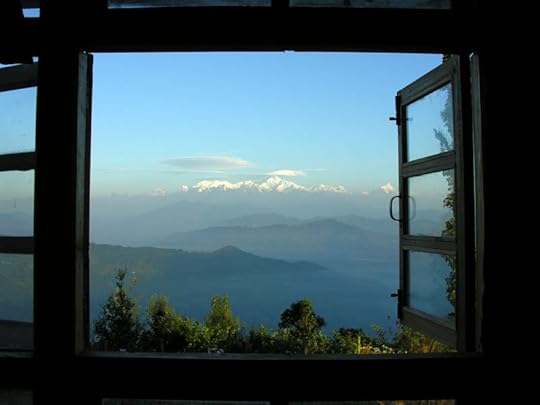
“It becomes clear why space and time and even the properties of matter itself depend on the observer in consciousness. In fact when you take this point of view it even explains why the laws of the universe themselves are fine tuned for the existence of life.” – Robert Lanza
November 16, 2016
BLESSED AS EARTH : Georgi Y. Johnson
BLESSED AS EARTH
I am the verdict of this enraging guilt,
a wilderness of curses, a torturous space
forsaken, far from holy, garden gates,
or worse –
We’re stained as barren shells,
unredeemed, as writhing, living hells:
the Big Event, the self contempt,
and (the lawmakers said)
even Eden needs walls
to keep her fed.
Purity I won’t be shamed,
nor dangle in fatal falls,
that fools decreed in vanity
to possess and wasten it all.
Hear! The self-pitying cry
of rapists above and below
suffering there and here,
as they pillage the sphere
divorcing forest and field
with the same, dying lie.
Come, Mother, let head rest
in your undulating meadow,
slipping beneath illusion,
out of the orphaned dread,
beyond, behind, ahead,
feeling the easy, no-wife pulse
of your breath breathing the stars,
with me, in me, no me,
no world, no nation, no border
just this leafy, watery, music of space,
undissected, unreflected, grace,
As in this sweet, earthy order-less order,
the old dynasty comes to pass
and we evaporate at last.
November 13, 2016
Compassion as Antidote to Fear. 5 Ways to Stay Free.
Fear. It’s an ungraspable kind of suffering in which we reflexively shrink back from life. It separates us from the environment, narrows the perceptive view, freezes the flow of feeling, contracts the mind, and blinds us to inner resources. Yet while fear hijacks the body mind in a state of isolation, it’s never a private event.
As life moves through us, it also carries the collective feelings and emotions of our environment. The human environment is a culmination of a shared and painful world history where the drum-roll of direction has been the somatic mantra: kill or be killed. Survival of form has not only been the end-game, it is often the start-game and the middle-game as well. Aspects of human nature such as care, love, peace and service have been hypnotically relegated as recreational luxuries or Utopian delusions. These strange creatures that walk increasingly with compassion, they’re walking a dead-end called sucker’s street – at least, so goes the belief.
Ironically, the chief commanders of the forces of fear often claim to be fearless. They ‘do’ anger, but they don’t ‘do’ fear. This is the true delusion.
The three physiological fear responses – spanning body, heart and mind – are freeze, flight and fight. Anger is a fear response. Take an angry moment and you’ll find terror on the underbelly. Show me a rage-ful man and I’ll show you a man in pure panic.
“The partner of fear is anger. Compassion has no opposite. In compassion, fear and anger are one.”
 When we are very afraid, a kind of relief occurs when anger spits it out and we launch an assault of some kind towards a perceived threat. The relief found in releasing the stress of fear through anger can make us believe we got free of fear. But what is actually happening is that we are generating more fear. We become the one threatening, rather than the object of the threat. The field of fear and threat is as vibrant as ever and we are still wired in.
When we are very afraid, a kind of relief occurs when anger spits it out and we launch an assault of some kind towards a perceived threat. The relief found in releasing the stress of fear through anger can make us believe we got free of fear. But what is actually happening is that we are generating more fear. We become the one threatening, rather than the object of the threat. The field of fear and threat is as vibrant as ever and we are still wired in.Although fear segregates, it energetically doesn’t take sides. The fear/threat generated by a ‘good’ guy for ‘good’ reasons is of the same energetic material as the fear/threat generated by a ‘bad’ guy for ‘bad’ means. With oversight, it might be possible to use these tools in an enlightened way, but the risk of getting sucked into a hell zone are great.
Let’s take a crude example. Two nuclear bombs were dropped on Japanese civilians to end the second world war. The intention was to annihilate the threat through the use of greater threat. Yet since that war ended, the world inherited nuclear warfare and other weapons of mass destruction and a ‘civilized‘ precedent of use. What followed has been the insanity of who is allowed WMD and who not. The deeper threat of humanity’s self-destruction was not alleviated in that event, but accelerated. And each child is now born into an ever more daunting field of fear, just as each spring flower is threatened. When we fight evil with evil, we become evil and evil (on its own limited terms), won.
 In these times, we are witnessing two dimensions expanding.
In these times, we are witnessing two dimensions expanding.The first dimension is the one we inherited – the dimension where the fiddler that plays the tune is fear and threat. This is a binary universe of good V evil, black V white, self V stranger.
The more subtle dimension – to which many of us have migrated in this life time – is the dimension of compassion. Here, the either-or, all-or-nothing, kill or be killed prerogatives of the wounded past melt down into a much wider ‘and-and’. Diversity is honored within unity – as the very ingredients of wholeness. Difference is welcomed as expansion. Survival is not the chief authority, but rather, the sanctity of life.
The dimension of fear and threat sees the emergence of the kind of freedom and unity of the deeper dimension as a kind of existential threat. Traumatized to its core, it experiences this peaceful energy as a death-threat to its own premise – the pillars of ‘us’ and ‘them’ on which it thrives. Its response is therefore often brutal.
The catch 22 here is that when we experience this kind of brutality, we become immediately afraid and rapidly angry. We want to extinguish it, exclude it from humanity, banish it from our realm. What happened?
What happened is a major victory for the dimension of fear and threat. We’re back in it again, dancing to its tunes.
 All great spiritual teachers have spoken about compassion as the antidote to fear. Compassion is not about surrender, agreement or giving up on this world, it’s about empowerment. Taken at its surface it can seem a repulsive game, loving your enemy. If you don’t feel love for him or her, what are you supposed to do? Fake it? Force it? Contort it? The dimension of fear and threat does become increasingly repulsive, at a somatic level, the more we move out of it, so how is it possible to feel compassion for its foot soldiers?
All great spiritual teachers have spoken about compassion as the antidote to fear. Compassion is not about surrender, agreement or giving up on this world, it’s about empowerment. Taken at its surface it can seem a repulsive game, loving your enemy. If you don’t feel love for him or her, what are you supposed to do? Fake it? Force it? Contort it? The dimension of fear and threat does become increasingly repulsive, at a somatic level, the more we move out of it, so how is it possible to feel compassion for its foot soldiers?
“When we experience, compassion, we no longer separate from the environment which sustains us. This immediately reduces fear.”
Here are 5 guidelines to generate compassion in these times, and in this, avoiding falling into the hell zone of pure dread.
1. Compassion for Compassion
 Compassion is about what is here, now. If you experience fear, disgust, rage or a sense of despair, then the first and most clear object of your compassion must be these feelings. Relaxing the body, you can even give these feeling a voice like the growl of a dog or the cry of an animal in pain. Let your own, free awareness be the source of compassion. Let the feelings move through your awareness, without trying to grasp them, fix them, or repress them.
Compassion is about what is here, now. If you experience fear, disgust, rage or a sense of despair, then the first and most clear object of your compassion must be these feelings. Relaxing the body, you can even give these feeling a voice like the growl of a dog or the cry of an animal in pain. Let your own, free awareness be the source of compassion. Let the feelings move through your awareness, without trying to grasp them, fix them, or repress them.2. Compassion Moves
Compassion is a movement of energy through the source of all you are and the rest of all you are. Let the compassion flow, into the steering wheel of your car as you drive, through your feet into the ground as you walk, towards the trees and the living nature that is everywhere around, unnoticed by the human field, even in the densest urban precincts. Let the care move through your hands as you touch an animal or even touch the edge of your chair. Fear and anger shrinks you into a body, compassion returns you to the whole physical environment.
3. Disinvesting Negativity
 There’s a good chance that if there is someone that embodies a major threat to you, that there are many others that remind you of him. Ugliness is everywhere and in our pain, we can begin to create a whole perceptive landscape filled with ugly behaviors, people, architecture and other evidences of the ugliness of the whole. In no time, we begin to look and behave pretty ugly ourselves. Next time you catch yourself in the grip of these fields of negativity, try noticing the beauty. Even the most horrible person has an innocence in their little finger. Even the most powerful tyrant is breathing in and out, like a helpless baby. There is always a detail to keep the window of compassion open. Compassion is your birth-right, don’t let it be hijacked by horror.
There’s a good chance that if there is someone that embodies a major threat to you, that there are many others that remind you of him. Ugliness is everywhere and in our pain, we can begin to create a whole perceptive landscape filled with ugly behaviors, people, architecture and other evidences of the ugliness of the whole. In no time, we begin to look and behave pretty ugly ourselves. Next time you catch yourself in the grip of these fields of negativity, try noticing the beauty. Even the most horrible person has an innocence in their little finger. Even the most powerful tyrant is breathing in and out, like a helpless baby. There is always a detail to keep the window of compassion open. Compassion is your birth-right, don’t let it be hijacked by horror.4. True Nature
 The greatest threat by all parties of humankind right now is towards the planet itself. In the rift between humanity and the whole, we find the greatest dread and the most horrific structure of arrogance and power. A good way to step out of the insanity of human is to honor nature both inside and outside of ourselves – the water, the earth element, the air element and the fire (heat). Nature is alive all around and through us, yet we are programmed to ignore it.
The greatest threat by all parties of humankind right now is towards the planet itself. In the rift between humanity and the whole, we find the greatest dread and the most horrific structure of arrogance and power. A good way to step out of the insanity of human is to honor nature both inside and outside of ourselves – the water, the earth element, the air element and the fire (heat). Nature is alive all around and through us, yet we are programmed to ignore it.If you find yourself caught in our woeful human entanglements, try just three mindful breaths. Breath in all that is human right now, and breath out nature. Breath in what is here, in you, as human, and slowly breath out all that is nature – the trees, rivers, clouds, sky, mountains, animals, fish and distant galaxies.
5. Be 4 Real
Last and perhaps most importantly, remember that compassion is always out of the and-and. It’s about togetherness, being ‘with’ whatever is anyway already here. Compassion is not a means to escape, a means to defeat or a means to confront. It’s as important to our physical and psycho-spiritual well-being as oxygen and regardless of any conflict we’re engaged in, it can be in the picture as well. It doesn’t take sides, but rather, it’s a paradigm shift which is possible inwardly, behind every fight.
“Our task must be to free ourselves from this prison by widening our circle of compassion to embrace all living creatures and the whole of nature in its beauty.”
― Albert Einstein
I AM HERE - Opening the Windows of Life & Beauty
- Georgi Y. Johnson's profile
- 30 followers


